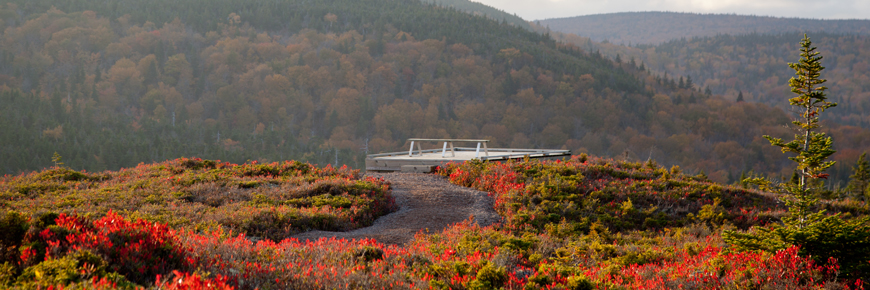
Parks Canada's role in helping species at risk in Cape Breton
Cape Breton Highlands National Park
There are several ways Parks Canada helps species at risk in Cape Breton, including implementing research and monitoring, management plans, developing partnerships and through legislation.
- Research projects - several research projects are ongoing at the moment, including work on the Bicknell's thrush. New projects may also be started.
- Monitoring - observation of the population trends to detect whether a problem exists.
- Park Management Plans - Zoning in parks protects habitat where species at risk live.
- Legislation - The Canada National Parks Act and Regulations, the Species at Risk Act and the Nova Scotia Endangered Species Act give special protection to species at risk.
- Accord for the Protection of Species at Risk - the Accord is an agreement between the federal, provincial and territorial governments to help prevent species in Canada from becoming extinct as a consequence of human activity. It is a key component of the Canadian Biodiversity Strategy because it ensures that the federal and provincial governments work together to protect species at risk. Parks Canada, a federal government agency, actively helps protect species as part of the Accord.
- Endangered Spaces Protection - the Endangered Spaces Campaign in Canada began in 1987. It was a 10 year campaign that concluded in 2000 and added 38 million hectares to Canada's parks and protected areas. Parks Canada is dedicated to preserving representative natural habitats of Canada's wilderness. Thirty-nine natural regions in Canada have been identified and 30 of these are included in Canada's National Parks system, leaving 9 unrepresented.
- Date modified :